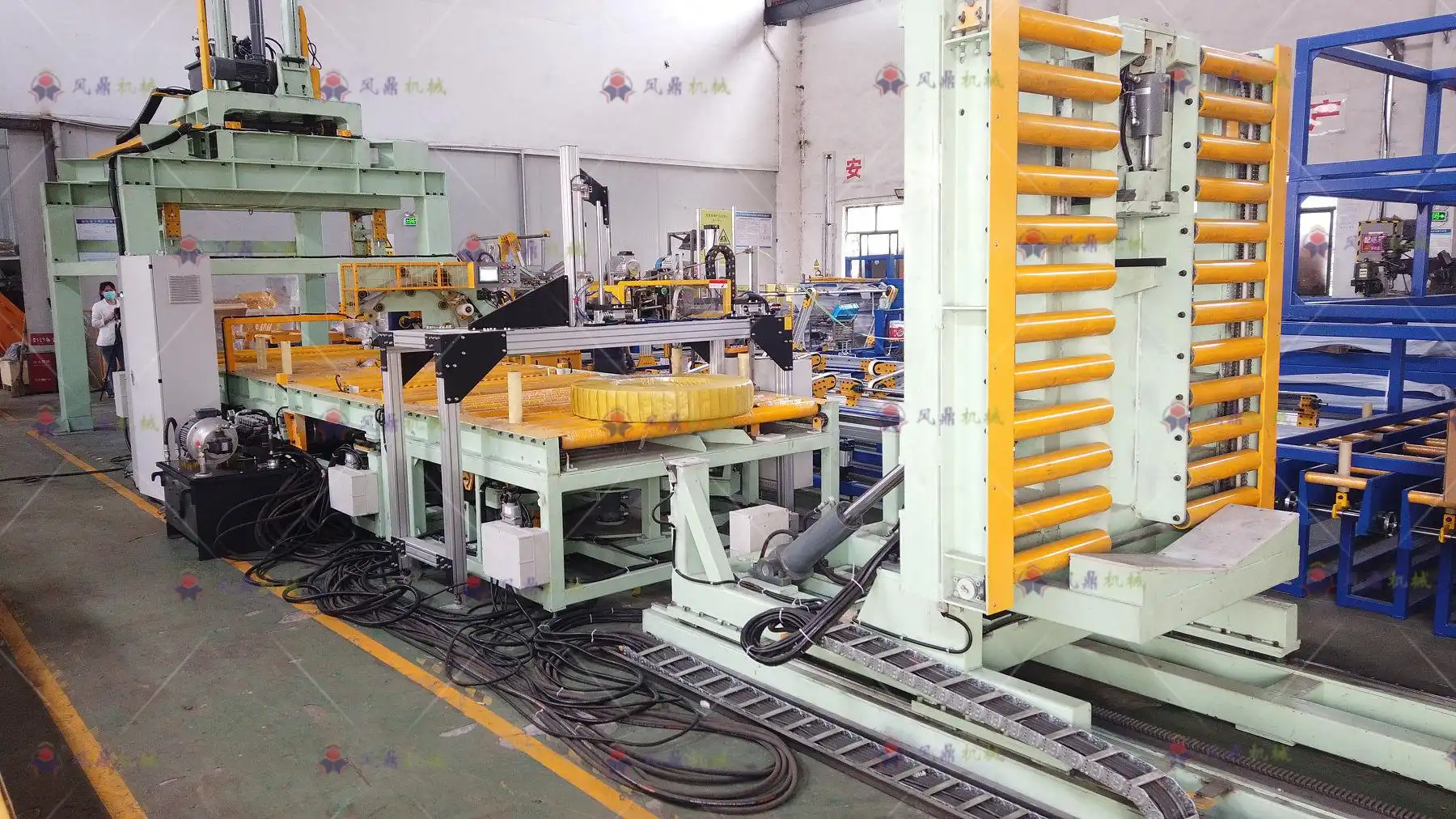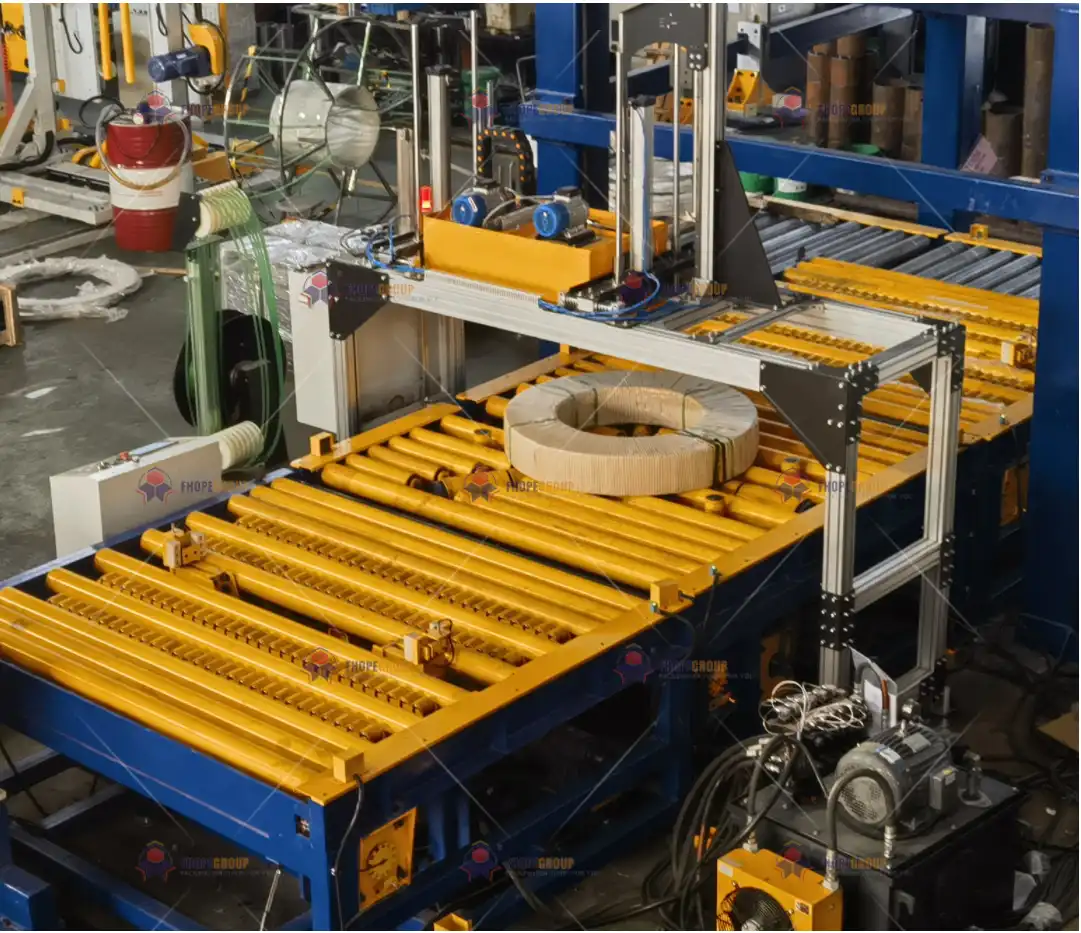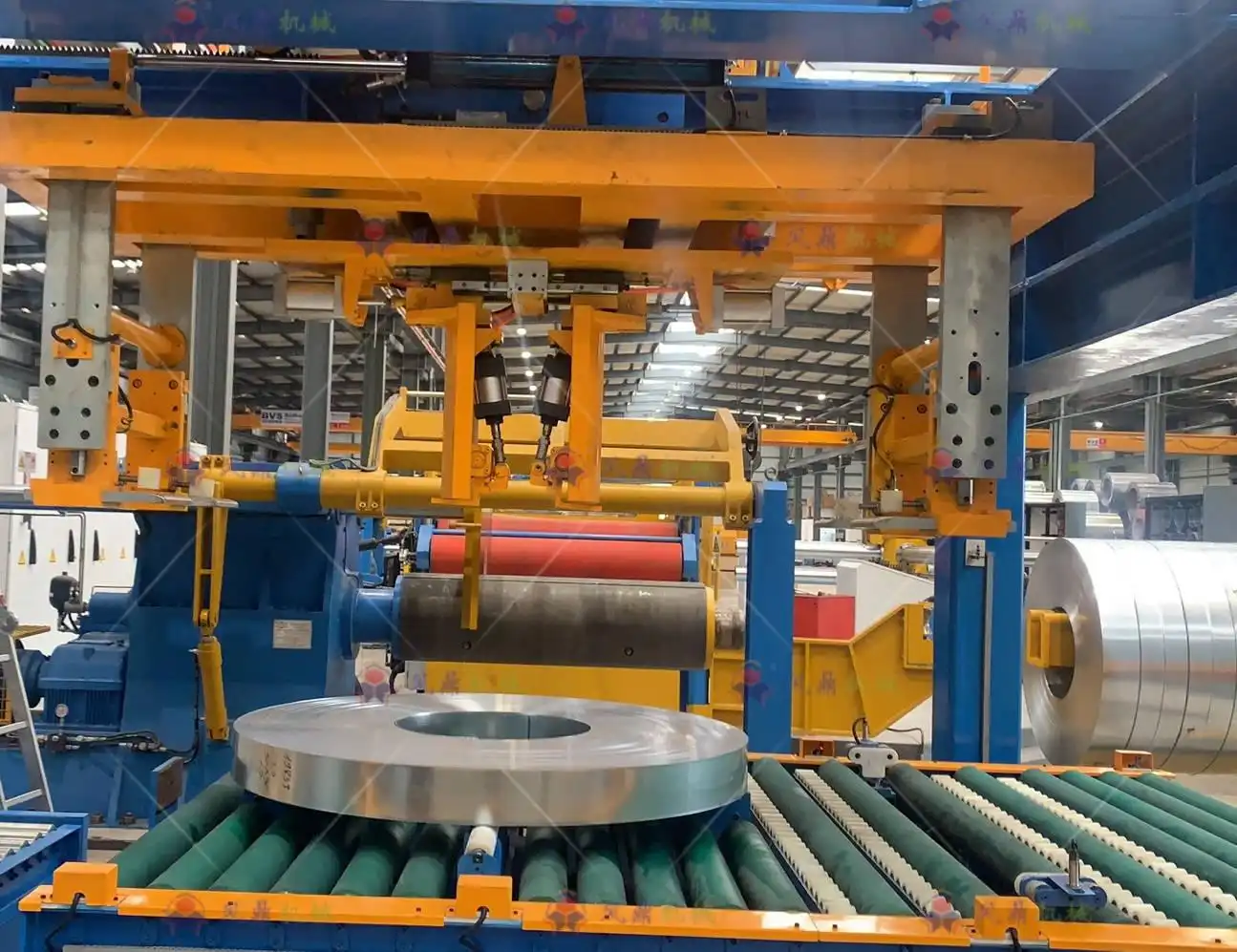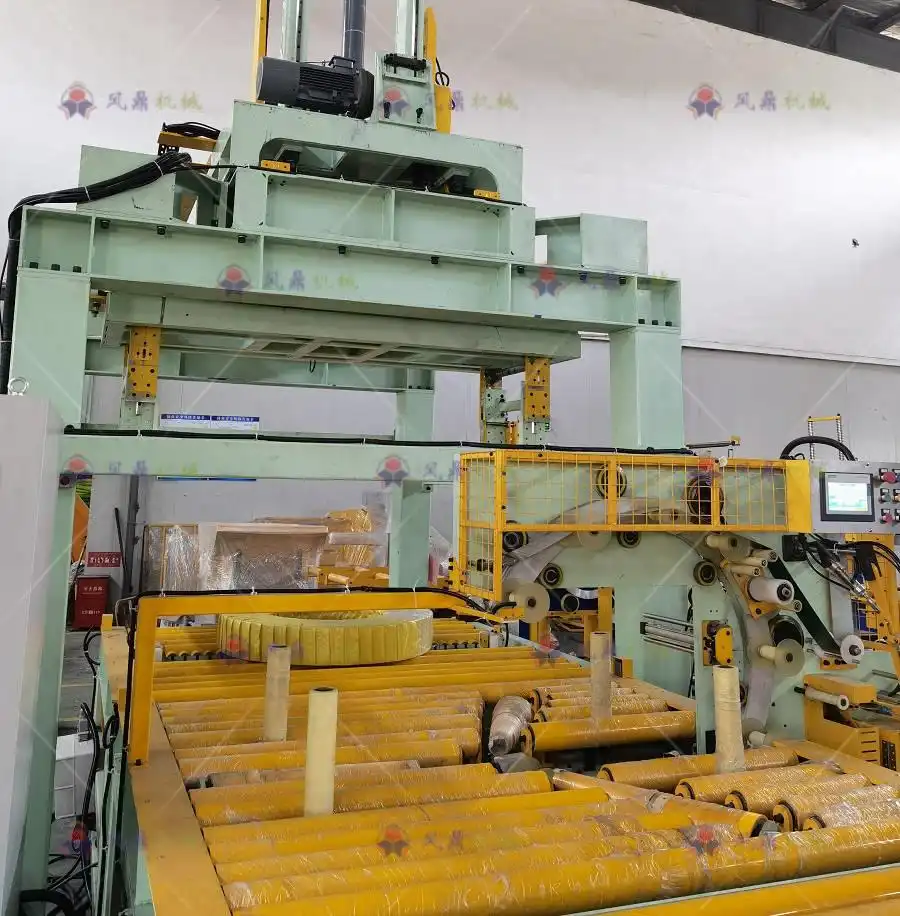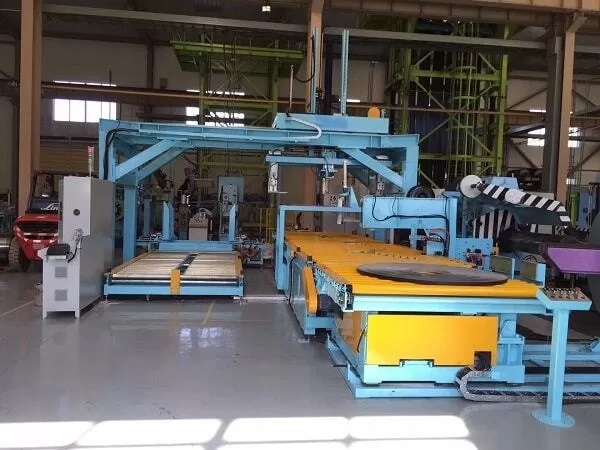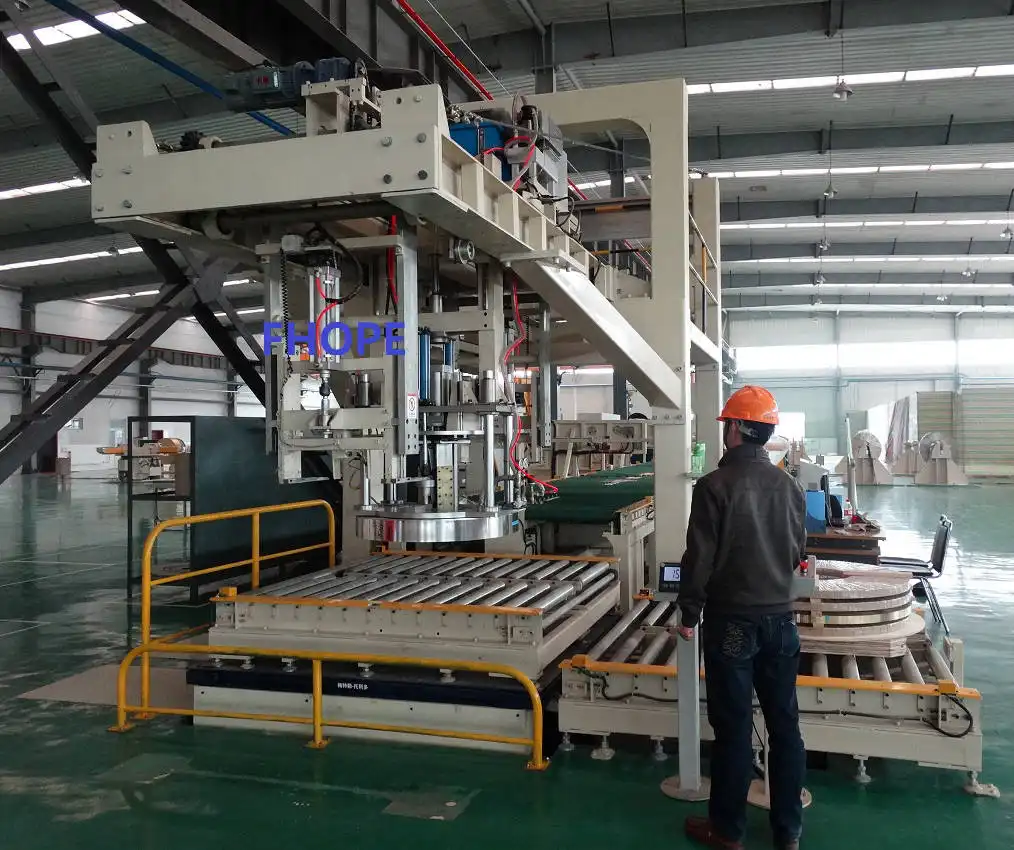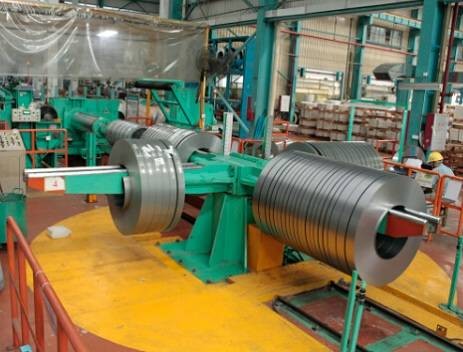The Differences Between Semi-Automatic and Fully Automatic Steel Coil Packing Lines
As industries like automotive, construction, and manufacturing continue to evolve,
steel coil packaging systems are becoming an essential part of the supply chain. Whether you are handling large steel coils for heavy machinery or smaller coils for electrical applications, proper packaging is critical to ensure that the product reaches its destination safely and without damage.
But when it comes to investing in a packaging solution, businesses are often faced with a key decision: should they opt for a semi-automatic steel coil packing line or a fully automatic one? Both systems offer significant benefits, but they also come with distinct differences that can impact operational efficiency, cost, and labor needs. In this article, we will explore the primary differences between semi-automatic and fully automatic steel coil packing lines to help you determine which system is the best fit for your business.
1. Overview of Semi-Automatic and Fully Automatic Packing Lines
Before diving into the specific differences, it’s important to understand the basics of both semi-automatic and fully automatic steel coil packing lines.
a. Semi-Automatic Packing Lines
Semi-automatic packing lines are designed to automate parts of the packaging process, while still requiring manual intervention. Typically, operators are needed to load coils, initiate certain steps in the process, or perform final checks before shipping. While these machines speed up operations compared to fully manual packaging, they still rely on human input for certain tasks.
b. Fully Automatic Packing Lines
Fully automatic packing lines take automation to the next level by handling the entire packaging process without the need for manual intervention. From loading and wrapping to strapping and unloading, these systems are designed to run autonomously, using advanced sensors, PLC controls, and robotics to ensure consistent, high-quality packaging.
Now that we have a foundational understanding of each system, let’s delve deeper into the differences and benefits of each.
2. Level of Automation
The most obvious difference between semi-automatic and fully automatic packing lines is the level of automation.
a. Human Interaction in Semi-Automatic Systems
Semi-automatic systems require operator input at various stages of the packaging process. This might include positioning the coil on the turnstile, starting the wrapping machine, or adjusting the tension during the strapping process. While the machine does handle most of the packaging work, an operator is still essential to ensure smooth operations.
b. Autonomous Operation in Fully Automatic Systems
In contrast, fully automatic systems are designed to run without human intervention. From the moment the coil enters the line to the point where it is fully wrapped, strapped, and ready for shipment, the machine takes care of everything. This level of automation is particularly beneficial for high-volume operations, where consistent, uninterrupted production is required.
Key Takeaway: Businesses with high production demands and minimal tolerance for errors will benefit most from the autonomous capabilities of a fully automatic system, while semi-automatic systems may be better suited for operations with lower throughput or where some degree of human control is preferred.
3. Speed and Efficiency
Another critical difference between the two types of packing lines is the speed and efficiency at which they operate.
a. Speed in Semi-Automatic Systems
Semi-automatic systems typically operate at slower speeds because of the human involvement needed to move between stages of the packaging process. This can create bottlenecks, especially during high-demand periods when the manual aspects of the system slow down the overall flow. However, for smaller operations, this level of control can be beneficial, as it allows for more flexibility in handling different types of coils.
b. Speed in Fully Automatic Systems
Fully automatic systems are designed for maximum efficiency. With no need for manual intervention, these systems can operate at high speeds, allowing for a continuous flow of products through the line. This makes them ideal for large-scale production facilities where speed is critical. Automated systems are also capable of maintaining a consistent pace, which is particularly important for ensuring that deadlines are met and production quotas are achieved.
Key Takeaway: If your business requires high-speed operations and minimal downtime, a fully automatic system will offer the greatest benefits in terms of throughput and efficiency. However, semi-automatic systems can still provide adequate speed for businesses with lower production demands.
4. Cost Considerations
When comparing semi-automatic and fully automatic systems, cost is another important factor to consider. Both types of packing lines come with their own price tags, but the true cost involves more than just the initial purchase price.
a. Initial Investment in Semi-Automatic Systems
Semi-automatic packing lines are generally more affordable upfront than their fully automatic counterparts. The machinery is simpler, and because they rely on human operators for part of the process, they don’t require the same level of advanced technology. For businesses that are just starting out or those that don’t have high-volume packaging needs, a semi-automatic system can be a cost-effective option.
b. Initial Investment in Fully Automatic Systems
Fully automatic packing lines, on the other hand, come with a higher initial cost. These systems incorporate advanced technology such as robotics, PLC controllers, and sensors, which drive up the price. However, the increased efficiency and lower labor costs can lead to significant long-term savings, especially for businesses with high production volumes.
Key Takeaway: While semi-automatic systems may be more affordable at the start, businesses with long-term growth goals may find that the higher initial investment in a fully automatic system pays off through lower labor costs and increased productivity over time.
5. Labor Requirements and Cost Savings
Labor is another major area where semi-automatic and fully automatic systems differ. In a world where labor costs are rising, many businesses are looking to reduce their reliance on human workers by investing in automation.
a. Labor-Intensive Semi-Automatic Systems
Since semi-automatic systems require human intervention at various stages, businesses that choose these systems must account for ongoing labor costs. This includes not only the cost of paying operators but also the additional costs of training and supervising workers to ensure the packaging process runs smoothly. Depending on the scale of the operation, these labor costs can add up quickly, especially in regions where wages are high.
b. Labor Savings in Fully Automatic Systems
In contrast, fully automatic systems are designed to minimize labor costs by eliminating the need for operators. Once the system is installed and configured, it can run autonomously, with occasional monitoring and maintenance. For large-scale operations, this can lead to significant cost savings over time, as fewer employees are needed to oversee the packaging line.
Key Takeaway: If reducing labor costs is a priority for your business, investing in a fully automatic system may be the best option. However, for smaller operations where labor costs are manageable, a semi-automatic system may still provide sufficient savings.
6. Maintenance and Downtime
Another critical factor to consider when comparing semi-automatic and fully automatic steel coil packing lines is maintenance. Both systems require regular upkeep, but the complexity of the system will influence how often maintenance is needed and how much downtime can be expected.
a. Maintenance Needs of Semi-Automatic Systems
Semi-automatic systems tend to be simpler in design, which can make them easier to maintain. Fewer moving parts and lower levels of automation mean that maintenance is typically less frequent and less expensive. However, because these systems rely on human operators, there is also the risk of operator error, which can lead to more frequent breakdowns or the need for repairs.
b. Maintenance Needs of Fully Automatic Systems
Fully automatic systems, while more complex, often include predictive maintenance features that allow businesses to anticipate when repairs or adjustments are needed. These systems are equipped with sensors and diagnostic tools that alert operators to potential issues before they lead to breakdowns. Although fully automatic systems may require more specialized maintenance due to their complexity, the ability to predict and prevent downtime can result in long-term savings.
Key Takeaway: Businesses that value reliability and want to avoid unplanned downtime may benefit more from the predictive maintenance capabilities of fully automatic systems, while those looking for simpler, easier-to-maintain systems may prefer semi-automatic solutions.
7. Customization and Flexibility
When it comes to customization and flexibility, both semi-automatic and fully automatic systems offer different advantages depending on the specific needs of a business.
a. Flexibility in Semi-Automatic Systems
Semi-automatic systems tend to offer more flexibility in terms of operator control. Because human intervention is required at various stages of the packaging process, operators can make adjustments on the fly. This allows businesses to handle a wider variety of coil sizes, shapes, and packaging configurations. For operations that require frequent changes or customizations, a semi-automatic system may provide the adaptability needed to manage diverse product lines.
b. Customization in Fully Automatic Systems
While fully automatic systems are often designed for high-volume, standardized production, they can also be customized to meet specific needs. Many fully automatic systems come with programmable logic controllers (PLCs), which allow for precise adjustments in wrapping tension, strapping strength, and material selection. These systems are ideal for businesses that require consistent, repeatable results but still need the flexibility to handle different coil specifications with minimal downtime during changeovers.
Key Takeaway: If your business handles a diverse range of products or requires frequent adjustments, a semi-automatic system may provide the flexibility needed. However, if you prioritize consistency and can benefit from programmable features, a fully automatic system may be the better choice.
8. Space and Infrastructure Requirements
The physical space available in your facility is another important consideration when choosing between semi-automatic and fully automatic steel coil packing lines.
a. Space Requirements for Semi-Automatic Systems
Semi-automatic systems tend to have a smaller footprint than fully automatic systems, making them ideal for businesses with limited space. Because operators are responsible for moving coils between stations, there’s no need for long conveyor systems or additional equipment for loading and unloading. This makes semi-automatic systems more compact and easier to integrate into existing facilities without major infrastructure changes.
b. Space Requirements for Fully Automatic Systems
Fully automatic systems, by contrast, often require more floor space due to the need for integrated conveyor belts, robotic arms, and other machinery that handle the coils throughout the packaging process. Additionally, fully automatic systems may require specialized infrastructure to accommodate the additional equipment, such as reinforced floors or dedicated power supplies.
Key Takeaway: If space is a concern, a semi-automatic system may be more feasible for your facility. However, if you have the room and are looking to streamline operations with minimal manual intervention, a fully automatic system may be worth the investment in terms of long-term efficiency.
9. Error Rate and Consistency
Packaging consistency and error rate are critical factors for businesses that prioritize product quality and want to minimize waste.
a. Human Error in Semi-Automatic Systems
Because semi-automatic systems rely on human operators, there is always the potential for human error. Whether it's misplacing a coil, failing to apply the correct amount of tension during wrapping, or using the wrong strapping material, mistakes can occur. These errors not only affect the consistency of the packaging but can also lead to product damage during shipping or storage.
b. Consistency in Fully Automatic Systems
Fully automatic systems eliminate most opportunities for human error by automating the entire packaging process. With pre-programmed settings and automated controls, these systems ensure that each coil is packaged to the same specifications every time. This level of consistency is particularly important for businesses that need to meet strict quality standards or that handle high-value products where even minor damage could result in significant financial losses.
Key Takeaway: Fully automatic systems offer greater consistency and fewer errors, making them ideal for businesses that cannot afford mistakes or variability in their packaging process.
10. Choosing the Right System for Your Business
When it comes to choosing between a semi-automatic and fully automatic steel coil packing line, the best choice depends on your specific business needs, including your budget, production volume, space availability, and labor constraints. Below are a few key considerations to help guide your decision.
a. Production Volume
If your business handles high volumes of steel coils and you need to minimize downtime, a fully automatic system will provide the speed and efficiency you need to keep up with demand. On the other hand, if you handle smaller batches or have the flexibility to manage a slower pace, a semi-automatic system may be more suitable.
b. Budget Constraints
Businesses with limited budgets may opt for a semi-automatic system due to its lower upfront cost. However, it’s important to consider the long-term savings that a fully automatic system can offer in terms of reduced labor costs and increased productivity. While the initial investment is higher, a fully automatic system could pay for itself over time, especially in high-demand environments.
c. Labor and Workforce
If reducing labor dependency is a priority, a fully automatic system will allow you to minimize the need for operators and lower labor costs. However, if your business has a skilled workforce and can handle some degree of manual operation, a semi-automatic system may still be a good fit.
d. Flexibility vs. Consistency
For businesses that require a high degree of flexibility, such as those that handle various coil sizes and packaging requirements, a semi-automatic system provides more control and adaptability. Conversely, if your primary concern is consistency and error reduction, a fully automatic system is the better option.
e. Space Availability
If your facility has limited space, a semi-automatic system’s smaller footprint may make it the more feasible option. However, if you have the room to accommodate a fully automated system, the benefits of integrating a streamlined, automated process may outweigh the initial space and infrastructure investment.
Conclusion
Both semi-automatic and fully automatic steel coil packing lines offer unique advantages depending on your business's needs. Semi-automatic systems provide flexibility, lower initial costs, and are ideal for smaller operations or those requiring diverse packaging solutions. In contrast, fully automatic systems offer higher efficiency, consistency, and long-term cost savings for businesses with high-volume production demands and the need for minimal human intervention.
Ultimately, the choice between semi-automatic and fully automatic systems comes down to your company’s specific priorities—whether it’s maximizing production speed, reducing labor costs, or ensuring packaging consistency. By carefully evaluating the benefits and limitations of each system, businesses can make an informed decision that aligns with their operational goals and budgetary constraints.
